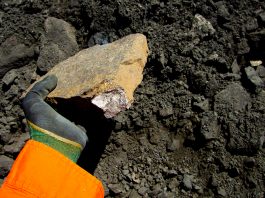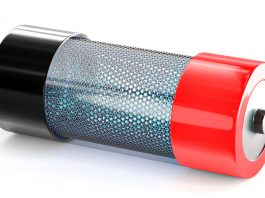Researchers at the University of Twente highlight that the new material, nickel niobate, has desirable properties even after multiple cycles of ultrafast battery charging.
According to researchers, using nickel niobate as the anode for lithium-ion batteries can improve the charging speed by up to ten times.
The research was conducted at the University of Twente, in the Twente Centre for Advanced Battery Technology, as part of UT’s MESA+ Institute, in collaboration with the Wuhan University of Technology in China and Forschugszentrum Jülich in Germany.
This improvement in charging speed is possible without the risk of damaging the anode material, causing battery breakdown, or reducing its lifetime. An additional advantage is that the manufacturing process is not too complex.
The researchers published their first results using batteries with the new anode in the Advanced Energy Materials journal.
Ultrafast battery charging
It is still possible to improve battery performance significantly, whether it is for electric vehicles or for the electricity grid. For instance, with faster charging and de-charging, or a higher energy density resulting in more compact and lighter batteries.
However, there is often some kind of ‘trade-off’ between these two. The high-speed chargers by the motorway are an example. Not all cars and car batteries are prepared for this. Consequently, there is a worldwide search for new materials as a solution. An important aspect, next to the technical specifications, is drastically improving the sustainability and carbon footprint of battery production.
New material nickel niobate
The new material nickel niobate (NiNb2O6) appears to have very desirable properties and even after many cycles of ultrafast charging, it also returns to its original level. This primarily has to do with its attractive ‘open’ and regular crystal structure, resulting in channels for charge transport that are identical.
This means that it has an improved performance over the standard anode material graphite. In the search for alternatives being researched at the University of Twente, new types of nano-structured materials are an option.
A disadvantage, however, may be that the channels are organised in a more haphazard way. This could even cause a deposit of lithium on the anode material, resulting in a poorer performance after every cycle. Also, manufacturing this sort of nanomaterial is complicated, but for nickel niobate, a cleanroom infrastructure is not necessary.
High charging and de-charging consequences
The high charging and de-charging rates do have consequences however for the weight and energy density. Nickel niobate is more compact than graphite, so it has a higher ‘volumetric’ energy density.
The researchers tested the first full batteries with the new anode material, for various existing cathode materials as well. They concluded that this version would be perfect for introducing it into an energy grid, in electrically powered machines that require fast charging and de-charging, or in electrically powered heavy transport. For its use in electrically powered cars, certain steps still have to be taken. The new anode is also suitable for replacing lithium by, for example, natrium, according to research leader Professor Mark Huijben.









